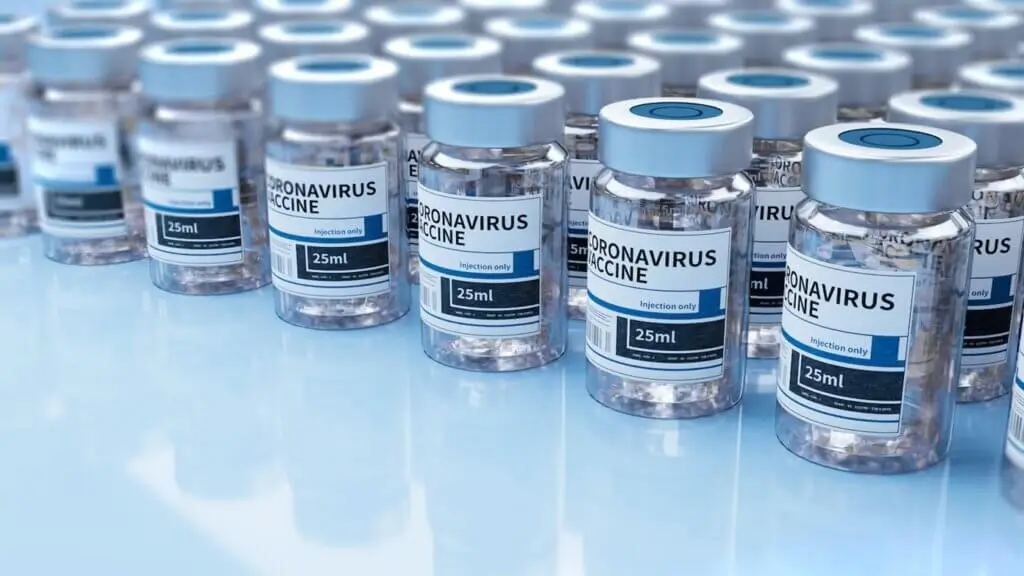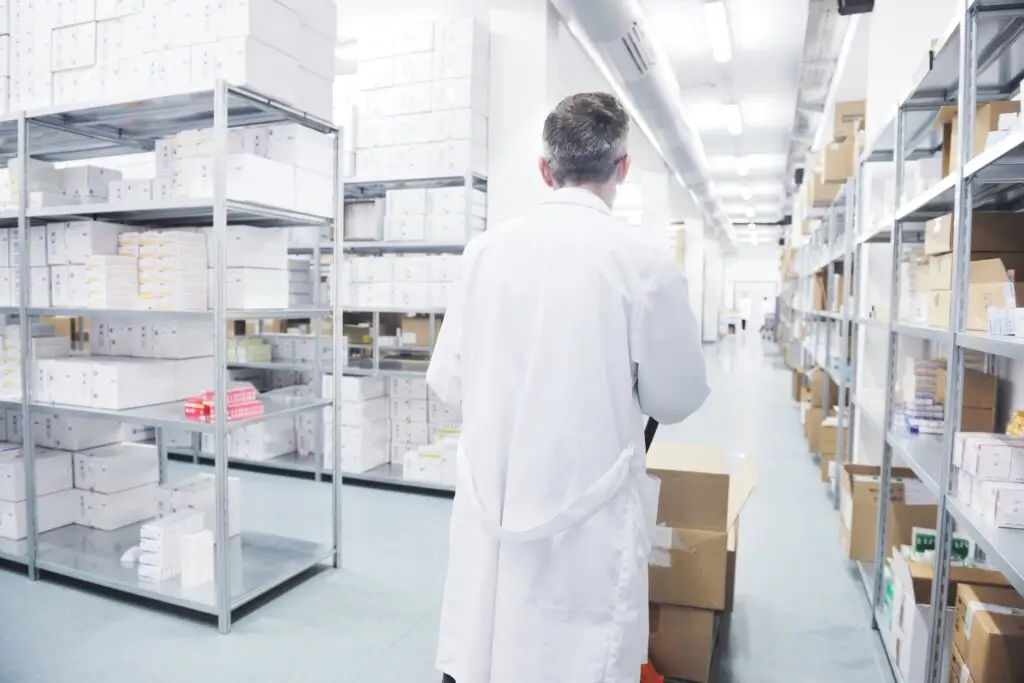
Article’s Summary
- Vaccine logistics is the intricate process of getting vaccines from the manufacturers to the communities that need them
- Vaccine storage and cold chain management are critical components of the overall vaccine logistics process.
- Primary obstacles in the vaccine supply chain is Temperature Control and Cold Chain Management and lack of adequate infrastructure
In the midst of the global battle against infectious diseases, the effective distribution of vaccines plays a pivotal role in safeguarding public health. Behind the scenes, an intricate web of operations, known as vaccine logistics, ensures that life-saving vaccines reach the right place, at the right time, and in the right condition. At the heart of this process lies the critical aspect of cold chain management, a complex system designed to preserve the efficacy and potency of vaccines from production to administration.
In this article, we delve into the intricacies of vaccine logistics and explore the vital role of cold chain management in preserving the efficacy of vaccines. We will also address some of the vaccine supply chain issues that arise in the distribution. By gaining a deeper understanding of vaccine logistics and cold chain management, we can appreciate the immense challenges involved and the tireless efforts made to ensure the uninterrupted flow of vaccines, safeguarding the health and well-being of communities worldwide.
What is vaccine logistics

Vaccine logistics is the intricate process of getting vaccines from the manufacturers to the communities that need them. It involves a complex web of planning, coordination, and implementation to ensure that vaccines are transported safely, efficiently, and in optimal conditions.
Imagine a massive puzzle where every piece has to fit perfectly for the whole picture to come together. That’s what vaccine logistics is all about. It requires collaboration between vaccine manufacturers, government authorities, healthcare providers, and logistics professionals, all working in sync to overcome challenges and deliver vaccines to people around the world.
One of the crucial aspects of vaccine logistics is cold chain management. Vaccines are delicate and sensitive biological products that require specific temperature control throughout their journey. From the moment they are produced to the moment they are administered, vaccines need to be kept within a narrow temperature range to maintain their effectiveness. This means carefully monitoring and maintaining the temperature at every step of the process, from storage facilities to transportation vehicles, and even during the actual vaccination process.
Vaccine storage and cold chain management

Vaccine storage and cold chain management are critical components of the overall vaccine logistics process. They play a vital role in preserving the efficacy and potency of vaccines, ensuring that they remain safe and effective from the moment they are manufactured until they are administered to individuals.
Imagine a delicate balance between temperature control and time sensitivity. Vaccines are incredibly sensitive biological products that can lose their effectiveness if not stored and transported under the proper conditions. That’s where cold chain management comes into play.
Cold chain management refers to the systematic approach of maintaining a continuous temperature-controlled environment throughout the entire vaccine supply chain. It involves a series of carefully coordinated steps to keep vaccines within specific temperature ranges, typically between 2 to 8 degrees Celsius (35.6 to 46.4 degrees Fahrenheit).
The role of cold chain management is twofold: preservation and protection. First and foremost, it ensures that vaccines are preserved at the correct temperature to maintain their potency. Vaccines are formulated with specific ingredients, such as live attenuated viruses or proteins, which can become less effective or even lose their protective qualities if exposed to temperatures that are too high or too low. By carefully monitoring and controlling the temperature, cold chain management helps to preserve the integrity and efficacy of vaccines, ensuring that they can effectively prevent diseases.
Secondly, cold chain management acts as a protective shield against temperature fluctuations and exposure to adverse conditions. Vaccines can encounter various challenges during transportation, such as extreme weather conditions, long distances, or unreliable storage facilities. Cold chain management minimizes the risk of temperature deviations that could compromise the vaccines, thereby safeguarding their quality and effectiveness.
The cold chain begins at the manufacturing facility, where vaccines are produced and packaged under controlled conditions. They are then transported in temperature-controlled containers to distribution centers and storage facilities. These facilities are equipped with refrigerators and freezers that maintain the required temperature range for each type of vaccine.
From there, vaccines are distributed to healthcare facilities, clinics, and vaccination centers. During transportation, specialized refrigerated vehicles or cold boxes with temperature monitoring devices are used to ensure that vaccines remain within the specified temperature range.
Once vaccines reach their final destinations, they are stored in refrigerators until they are ready for administration. Vaccinators follow strict protocols to handle and administer vaccines, ensuring that the entire process maintains the necessary temperature controls.
Any deviations from the recommended temperature range, whether during storage or transportation, can lead to reduced potency or complete loss of effectiveness. It’s crucial for healthcare workers and logistics personnel to undergo training and adhere to stringent protocols to guarantee the integrity of vaccines.
Vaccine Supply Chain Issues

Limited Infrastructure
One of the primary obstacles in the vaccine supply chain is the lack of adequate infrastructure, particularly in remote or resource-constrained areas. Insufficient storage facilities, unreliable transportation networks, and a lack of proper cold chain equipment can impede the efficient distribution of vaccines. In many regions, the absence of reliable electricity supply adds an additional layer of complexity, making it difficult to maintain the necessary temperature controls for vaccine storage. Overcoming these infrastructure challenges requires investment in building robust and sustainable supply chains, bolstering storage capacities, and improving transportation networks, particularly in underserved areas.
Temperature Control and Cold Chain Management
Maintaining the required temperature range is crucial for the effectiveness of vaccines. However, temperature control and cold chain management pose significant challenges in the supply chain. From the moment vaccines are manufactured to the time they are administered, they need to be stored and transported under strict temperature conditions. Any deviation from the recommended range can compromise their potency and efficacy. In regions with extreme climates or limited access to reliable refrigeration systems, ensuring proper temperature control becomes even more challenging. This necessitates the implementation of innovative solutions, such as solar-powered refrigeration units, temperature-monitoring technologies, and the use of insulated packaging, to mitigate the risks associated with temperature fluctuations and maintain the integrity of vaccines.
Distribution Inequities
Achieving equitable access to vaccines remains a critical concern. Vaccine supply chain issues often exacerbate existing disparities in healthcare delivery. Limited availability of vaccines, coupled with unequal distribution networks, can result in underserved communities being left behind. High-income countries may have better access to vaccines due to their purchasing power and well-established supply chains, while low-income countries and marginalized populations struggle to obtain adequate vaccine supplies. Addressing distribution inequities requires collaborative efforts between governments, international organizations, and manufacturers to ensure fair allocation and prioritize reaching vulnerable populations.
Timely Delivery and Demand-Supply Mismatch
Ensuring the timely delivery of vaccines is absolutely critical in our efforts to control the spread of infectious diseases and protect public health. Unfortunately, the vaccine supply chain is not immune to challenges that can disrupt the smooth flow of vaccines from production to administration. These issues can have far-reaching consequences, jeopardizing the ability to meet the demand for vaccines and potentially compromising our ability to combat diseases effectively.
Moreover, production delays can compound the challenge. Vaccine manufacturing is a complex process that requires meticulous attention to detail and stringent quality control measures. Delays can arise due to various reasons, such as issues with raw material procurement, technical difficulties in scaling up production, or unforeseen obstacles that arise during the manufacturing process. Any hiccup in production can have a cascading effect, leading to a shortfall in the availability of vaccines.
Quality Assurance and Counterfeit Vaccines
The importance of upholding rigorous quality assurance measures across the vaccine supply chain cannot be overstated when it comes to safeguarding the safety and effectiveness of vaccines. One pressing issue that looms over the entire process is the constant risk of counterfeit vaccines infiltrating the supply chain. This menace poses significant threats, not only to public health but also to the trust and confidence that people place in immunization programs.
Counterfeit vaccines represent a grave danger as they can be ineffective or even harmful. They may contain incorrect ingredients, improper dosages, or lack the necessary quality controls. In some cases, they might be entirely fake, with no active ingredients at all. The consumption of counterfeit vaccines not only exposes individuals to potential health risks but also undermines the collective efforts to combat infectious diseases and protect public health.
Information management
Effective information management lies at the heart of ensuring a smooth and efficient vaccine supply chain. In the complex web of stakeholders involved, including vaccine manufacturers, distributors, healthcare providers, and government agencies, seamless coordination and information sharing are vital for the entire process to function effectively. Unfortunately, inadequate data sharing, communication gaps, and a lack of interoperability between different systems can give rise to inefficiencies and delays that hinder the timely delivery of vaccines.
One of the major stumbling blocks in effective information management is the presence of communication gaps. Stakeholders along the supply chain often operate within their own silos, with limited avenues for collaboration and information exchange. This lack of communication can lead to misunderstandings, duplicated efforts, and suboptimal decision-making. Bridging these communication gaps requires fostering a culture of collaboration and establishing channels for open dialogue, enabling stakeholders to share insights, challenges, and best practices.
Vaccine wastage
Minimizing vaccine wastage is of utmost importance in the vaccine supply chain. Wastage refers to the unfortunate instances when vaccines expire, sustain damage, or remain unused past their expiry dates. Several factors contribute to vaccine wastage, including poor inventory management, improper handling, and low vaccine uptake due to vaccine hesitancy or various other reasons.
Proper handling of vaccines is equally vital in minimizing wastage. Vaccines are sensitive biological products that require specific temperature conditions and careful handling procedures to maintain their efficacy. Deviations from the recommended storage and transportation guidelines can compromise the vaccines’ quality and render them ineffective. Mishandling, exposure to excessive heat or freezing temperatures, or improper reconstitution processes can all contribute to vaccine damage and subsequent wastage.
What are the technology included in the vaccine logistic

Vaccine logistics utilize various technologies to ensure the efficient and effective distribution of vaccines. Here are some of the technologies commonly used in vaccine logistics:
Cold chain management
Cold chain refers to the system of temperature-controlled storage and transportation required for vaccines. Technologies such as temperature monitoring devices, data loggers, and real-time tracking systems help maintain the required temperature conditions throughout the supply chain. These technologies provide visibility into temperature excursions, enabling quick action to prevent damage to vaccines.
Barcoding and serialization
Barcoding and serialization technologies are used to track and trace individual vaccine vials or packaging throughout the supply chain. Each vaccine product is assigned a unique barcode or serial number, which can be scanned and recorded at various stages, including manufacturing, distribution, and administration. This helps ensure authenticity, prevent counterfeiting, and monitor the movement of vaccines.
Supply chain management systems
Advanced supply chain management software and platforms are utilized to streamline and optimize vaccine logistics. These systems integrate various data sources, including inventory levels, demand forecasts, shipping information, and healthcare facility data, to enable effective planning, coordination, and decision-making across the supply chain.
Geographic information systems (GIS)
GIS technology is used to map and visualize the distribution network, including manufacturing facilities, distribution centers, healthcare facilities, and population demographics. GIS helps identify optimal routes, assess transportation infrastructure, and plan vaccine distribution strategies based on population density, accessibility, and other relevant factors.
Data analytics and artificial intelligence
Data analytics and AI technologies are employed to analyze large volumes of data collected from various sources in the vaccine supply chain. These technologies can help identify patterns, trends, and potential bottlenecks, enabling proactive decision-making, demand forecasting, inventory optimization, and resource allocation.
Mobile applications and communication tools
Mobile applications and communication tools play a crucial role in vaccine logistics. These tools are used by healthcare workers, logistics personnel, and other stakeholders to access real-time information, report vaccine usage and wastage, schedule appointments, and communicate important updates or alerts.
Click here to find out more about Cold Chain Packing & Logistics today.